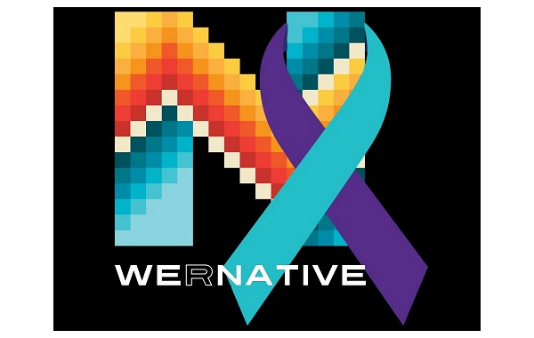Suicide Prevention: Native American Youth

American Indian/Alaska Native youth and young adults have the highest suicide rates of any racial/ethnic group in the U.S., according to the Centers for Disease Control and Prevention.
Several recent studies have sought to identify risk factors and protective factors relating to suicide among Native American youth. Stressful life events and depression were found to be the strongest predictors of suicide ideation among tribal youth in one study. Other risk factors include parents or other caregivers with substance use problems and the individual’s substance use history, particularly alcohol and marijuana.
Having a friend or family member die (by suicide or other cause) increases the suicide risk for Native American youth. The injustice and historical trauma suffered by American Indians and Alaska Natives (resettlement, destruction of cultures and economies) also contributes to the high suicide rate in this population. (1)
Among the protective and resiliency factors identified for Native American youth are participation in cultural activities and positive relationships with adults. For girls, positive relationships with adults at home, at school and in the community were associated with lower likelihood of suicide attempts in one study; for boys it only held true for positive relationships at home.
A review of more than a dozen studies of American Indian/Alaska Native youth identified several categories of protective factors positively associated with emotional health (depression and suicide attempt) and with other health and social outcomes. These factors include current and/or future aspirations, personal wellness, positive self-image, positive relationships with family members and with others in school or the community, and cultural connectedness.
There are examples of promising suicide prevention approaches among Native American youth.
 While suicide rates among American Indian and Alaska Native youth are high, rates among adults are significantly lower than other racial/ethnic groups. A program developed by the White Mountain Apache Tribe builds on cultural and community strengths and the resilience among elders. It involves an innovative curriculum that works with older adults to connect youth to their heritage, traditions, and culture, which has shown to be a protective factor for Native Americans. Developing the program took several years and included extensive community involvement. After receiving training, members of the Elders' Council visit local schools to teach youth about the Apache culture, language and way of life.
While suicide rates among American Indian and Alaska Native youth are high, rates among adults are significantly lower than other racial/ethnic groups. A program developed by the White Mountain Apache Tribe builds on cultural and community strengths and the resilience among elders. It involves an innovative curriculum that works with older adults to connect youth to their heritage, traditions, and culture, which has shown to be a protective factor for Native Americans. Developing the program took several years and included extensive community involvement. After receiving training, members of the Elders' Council visit local schools to teach youth about the Apache culture, language and way of life.
Another example is the WeRNative program, developed by the Northwest Portland Area Indian Health Board. It is a multimedia program designed by youth, for youth, and includes a website, texting service and social media presence providing information about mental, physical and sexual health and positive relationships. It also provides information about the environment, AI/AN cultures and traditions. In addition to extensive information and outreach, the program also offers mini grants to teens and young adults for community service projects.
Resources
See more on Suicide Prevention, including warning signs and risk factors.
#chatsafe: A new guide for online safety. Adapted for use in the U.S. by the Jed Foundation and the Stanford Psychiatry Center for Youth Mental Health and Wellbeing. Originally developed by Orygen, The National Centre of Excellence in Youth Mental Health, Parkville, Victoria


References
- Kelley, A., Restad, D., & Killsback, J. (2018). A public health approach: Documenting the risk and protective factors of suicide ideation in one American Indian community. Psychological Services, 15(3), 325-331.
- FitzGerald, CA, et al. The Association Between Positive Relationships with Adults and Suicide-Attempt Resilience in American Indian Youth in New Mexico. American Indian Alaska Native Mental Health Research, 2017:24(2):40-53.
- Centers for Disease Control and Prevention. Suicides Among American Indian/Alaska Natives – National Violent Death Reporting System, 18 States, 2003-2014. (Rachel A. Leavitt, et al.) MMWR Weekly Report, March 2, 2018. Vol. 67, No. 8.
- Cwik, M., et al. 2019 “Let our Apache Heritage and Culture Live on Forever and Teach the Young Ones”: Development of The Elders’ Resilience Curriculum, an Upstream Suicide Prevention Approach for American Indian Youth. American Journal of Community Psychology. Published online July 16, 2019.
- Bosold, A. 2018. Native Youth Choose Life: A Protective Factors Approach. University of Washington. Northwest Bulletin: Family and Child Health.
- Henson M, Sabo S2, Trujillo A, Teufel-Shone N. Identifying Protective Factors to Promote Health in American Indian and Alaska Native Adolescents: A Literature Review. J Prim Prev. 2017 Apr;38(1-2):5-26.
- Suicide Prevention Resource Center, Risk and Protective Factors

